- Home |
- Why With Us |
- About Us |
- Booking |
- Contact Us |
- Site Map


Everest Mani Rimdu Festival Trek
16 days (ktm-ktm) Days from
Every year during the month of Oct-Nov, in the Khumbu region of Nepal there occur a famous Sherpa festival known as Mani Rimdu. This is basically a Buddhist Dance Drama festival, enacted by the monks of Tengboche (Tengboche gompa is home to around 36 monks and 25 students) and Chiwong Monastery simultaneously. The site of this high altitude entertainment is usually the temple or gompa within the monastery compound itself where the Buddhist monks dress in costumes and perform ritual dances invoking Guru Rimpoche and the times he brought the teaching of Buddha to Tibet in the 7th century. Situated on a generous plateau at an altitude of almost four thousand meters, the Tengboche and Chiwong gompas (monastery) are crowned by some of the highest mountains in the world: Thamserku (6608m), Kangteigh (6779m), Taboche (6542m), and of course, the summit of Mt. Everest (8848m) peering above the Lhotse-Nuptse wall. More…..
| Max. Elevation : 3875m | Grade : Moderate |
| Best season : Oct-Nov | Type of trek : Tea houses/Lodges |
| Duration : 16 Days | Starting point : Lukla |
| Ending point : Kathmandu | Highlights : Culture/Nature |
Every year during the month of Oct-Nov, in the Khumbu region of Nepal there occur a famous Sherpa festival known as Mani Rimdu. This is basically a Buddhist Dance Drama festival, enacted by the monks of Tengboche (Tengboche gompa is home to around 36 monks and 25 students) and Chiwong Monastery simultaneously. The site of this high altitude entertainment is usually the temple or gompa within the monastery compound itself where the Buddhist monks dress in costumes and perform ritual dances invoking Guru Rimpoche and the times he brought the teaching of Buddha to Tibet in the 7th century. Situated on a generous plateau at an altitude of almost four thousand meters, the Tengboche and Chiwong gompas (monastery) are crowned by some of the highest mountains in the world: Thamserku (6608m), Kangteigh (6779m), Taboche (6542m), and of course, the summit of Mt. Everest (8848m) peering above the Lhotse-Nuptse wall. More…..
The festival of Mani Rimdu is a 19 day sequence of sacred ceremonies and empowerments, culminating in a 3 day public festival. The festival recreates the legendary events in their region, namely the establishment of Buddhism by the great saint Guru Rimpoche who goes by a number of names, such as Padmasambaba, Dorje Trollo and others. Through the dance, symbolic demons are conquered, dispelled, or converted to Dharma protectors, as positive forces clash with those of chaos. The dances are meant to convey Buddhist teachings on many levels – from the simplest to the most profound- and especially for those who do not have the opportunity to study and to meditate extensively. From the beginning until the end of the festival, 24 hour pooja (rituals) are performed by the monks to consecrate the Mandala, the Mani Rilwu (sacred pills), the Tsheree (pills of long life) and the Torma. The monks, who perform the dances, first take vows at an empowerment ceremony with the Rinpoche. During the dances they become deities, rather than ordinary people. Because the dances are regarded as sacred, they can only be performed in the context of Mani Rimdu, and not for ordinary entertainment.
Performed in the lap of these gigantic Himalayan monasteries, the annual long life festival takes three days to complete with the atmosphere culminating to dances, blessing and in the final fire purification built over a sand mandals. This is also the time when the Sherpa in the area take a break from framing and see something akin to a passion play from Europe or the Americas. The dancers convey concepts without writing for much of the population still cannot read or write. Not to mention the fact that there is little prospects for entertainment high in those misty Himalayas. It is therefore an opportunity local Sherpa and Tibetan community, to gather and celebrate together with the monastic community.
Mani Rimdu is a re-creation of legendary events; the establishment of Buddhism in Tibet by the great saint, Guru Rinpoche (Padmasambhava). Through the dances, symbolic demons are conquered, dispelled, or converted to Dharma Protectors, as positive forces clash with those of chaos. The dances convey Buddhist teachings on many levels - from the simplest to the most profound - for those who do not have the opportunity to study and meditate extensively.
Major highlights of Mani Rimdu Festival:
- Festival Preparations:
Mani Rimdu takes place from the first day of the tenth month of the Tibetan lunar calendar, falling between mid-October and mid-November. It lasts until the nineteenth day of the month. From the beginning until the end of the festival, 24-hour puja's (rituals) are performed by the monks to consecrate the Mandala, the Mani Rilwu Pills (sacred pills), the Tshereel (pills for long life) and the Torma.
- The sand Mandala
The Mandala is carefully constructed, grain by grain, from colored sand; an intricate and symbolic design that takes many days to complete. Protective dagger deities are placed around the Mandala, and the bowl of Mani Rilwu pills (spiritual medicine) is placed above the center. The Mandala becomes the palace of Garwang Thoze Chenpo, the Lord of the Dance; an emanation of the Buddha of Compassion, and the central deity of Mani Rimdu. The mantra "OM AH HUNG RHI, OM MANI PADME HUMG", is repeated thousands of times by the monks during the weeks of ceremony preceeding the public festival. During their meditation, they visualize compassion flowing in the form of the mantra, into the Mandala and the Mani Rilwu pills. Compassion then radiates out from the Mandala, blessing all those who attend the Mani Rimdu festival.
- The Empowerment (Wong)
The Wong is the opening public ceremony. It’s performed on the full moon day, of the tenth month in the Tibetan lunar calendar. During the ceremony the Rimpoche gives the empowerment on this auspicious occasion, for long life, happiness and prosperity. The sacred Mani Rilwu (sacred pills) and Tshereel (pills for long life), are given to the audience attending the ceremony.
- The Dance (Chham)
The dances take place on the 2nd day of Mani Rimdu festival.
- Ser –Kyem
This offering of spiritual nectar is made in many ceremonies. The six dancers represent Ngag-pa, Tantric magicians. They make offerings of alcohol from silver chalices, and small tormas, to the Lama Yidam, Khandro and Shi – Dak (what is known as the earth deities). A Buddhist practitioner takes ‘refuge’ in the lama (spiritual guide), Yidam (personal deity) and Khandro (wisdom dakini). A central theme in Tibetan Buddhism practice is to make offering to these beings so that they will help with the4 virtuous actions which lead to Buddhahood.
- The Fire Puja (Jinsak)
The fire puja is performed in the courtyard the day after the dances. Most of the village people have gone home, and Chiwong will have a quite, almost family atmosphere. The fire puja is an offering to Agni (the God of Fire) and to the Gods of the mandala – to allay all harm in the world. The harm is visualized as dissolving into the grain and butter is burned. Afterwards, the sand mandala in the temple is dismantled, and the sand is given as an offering to the serpent gods (Nagas) at the spring below the monastery.
- Chhingpa
The next dance depicts the four protecting Ghings, defending the Buddhist faith against attack by demons. Shining paper masks hide the faces of the dancers, each a different colours and each displaying a constant smile accompanied by the beating of cymbals. Without breaking step, the dancers charger haltingly at children in the audience. The youngsters recoil in horror, much to the amusements of everyone in the audience. The gentle dance of the Dakini contrasts sharply with what has gone previously. Five young priests execute slow motion dance steps, keeping perfect time with the soft tinkle and slow beat of bells and drums held in their hands. The dancers are without masks, and portray female spiritual figures, the partners of Padmasambhave who has come from the pure land of Shangdok Palri where they live within his mandals. They herald the imminent arrival of Guru Rimpochhe at the Mani Rimdu. Two of the Ghing are male, and carry cymbals, while the two females carry drums. The makes represent skillful means and the female represent wisdom; these two aspects of the path to enlightenment are at the heart of Vajrayana (tantric) practice. The union and harmony of skillful means (compassion) and wisdom, is often depicted (and often misunderstood) in Tantric iconography.
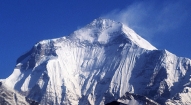
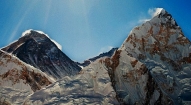
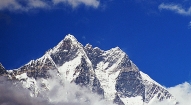
Nov. 4: Arrive Kathmandu International Airport- T I A (1300m) and transfer to hotel.
Nov. 5: After breakfast we set out for an extensive guided sightseeing tour of Kathmandu valley’s cultural, historical, religious and (world heritage) sites. During the course, we visit the famous Pashupatinath temple of Lord Shiva situated at the holy bank of River Bagmati where we will also observe the Hindu cremation ritual. We then proceed to the Boudhanath stupa, a major pilgrimage centre for the Buddhist faith which also is the largest of its kind in the world. We then have a short break for lunch followed by a visit to Swoyambhunath stupa also known as the Monkey Temple from where we can have a bird’s eye view of whole of Kathmandu valley. Following this we then proceed for a visit to Kathmandu Durbar Square, the oldest royal palace of Kathmandu and a UNESCO world heritage site. The whole are of Kathmandu Durbar Square is dotted with numerous fascinating Nepalese architect dating back many centuries. The site is also the home to Nepal’s living Goddess – Kumari, where we will also have the opportunity to experience firsthand this unique Nepali tradition. In the evening we will attend the welcome dinner hosted by Makalu Adventure with live Nepalese culture shows.
Nov. 6: Kathmandu ( 1310m) - Lukla (2827m) - Phakding (2652m) 5 hours
After a very early start, and an early take off from Kathmandu Domestic Airport, a 45 minute flight is all it takes to propel us into the Everest region of Nepal. The landing at Lukla (2800m) is spectacular and on arrival we are greeted by our sirdar and trekking crew who organise the luggage and hustle us off for tea. After a leisurely lunch we start the trek in earnest, setting off for a gentle walk to Phakding (2800m), a further 3 hours to the north. The trail leads through Lukla, past hotels, shops and airline offices to the edge of the Lukla plateauwhere the trail drops to meet the intersection of the Jiri trail at Chablung. From here the trail follows the Dudh Kosi north through the village of Ghat and then finally to Phakding where we spend the night at lodge.
Nov. 7: Phakding - Namche Bazar (3440m) 7 hours
From Phakding we cross the river and head up to the valley. The trail keeps close to the river valley and is lined with beautiful blue pine and rhododedron forest atht is very spectacular in the spring months when the flowers are in bloom. We cross the Dudh Kosi at Benkar where there are tantalizing glimpses of the snow peaks Kusum Kanguru (6369m) and Thamserku (6623m). From here it is only a short walk to Monjo (2835m) where we arrive in time for lunch and where the trail officially enters the Sagarmatha National Park boundry. There is an entrance station just beyond the village where trekking permits are checked and National Park fees collected. After lunch at Monjo, we continue along the trail, crossing the Bhote Kosi River to begin the steep climb up to Namche Bazaar 3500m., the administrative center of the Sagarmatha National Park and the hub of Sherpa society. Remember to look out for glimpses of Mt. Everest from the trail on the way to Everest! Overnight at the Lodge.
Nov. 8: Rest and acclimatization in Namche Bazaar:
This is the scheduled acclimatization' day for this trek. Health experts always recommend us to stay active and moving during the rest day too instead of being idle. We either spend the day taking a day hike to Thame or visiting Khunde or relaxing and exploring Namche Bazaar itself. Namche Bazzar is the main centre of the Everest (Khumbu) region and has government offices, ATMs, Internet cafes, shops, restaurants, a bakery and a colorful market each Friday evening and Saturday. If we trek a few hundred vertical feet during the day, it will help us to properly acclimatize. Our guides will take us to the Tourist Visitor Center near the headquarter of the Sagarmatha National Park where we can observe an assortment of things related to the first Everest ascenders, Sherpa culture and learn about the various plant and animal life of the Everest region. Overnigh at the lodge.
Nov.9: Namche – Thengboche (3875m) 6 hours:
From Namche, we climb towards the park headquarters and follow a contouring trail high above the Dudh Kosi River. Above Namche the route to Thyangboche becomes visible with the monastery seen below the summit of Everest and surrounded by Himalayan peaks. On today's walk there are opportunities to spot the local wildlife, including the beautiful Danphe Pheasant often seen among the birch and silver fir forest between Shanasa and Trashinga, and Himalayan Thar on the high ground above the trail. After reaching the re-forestation nursery at Trashinga, the trail drops steeply to cross the Dudh Kosi at Phunkitenga (3250m), where we take lunch. In the afternoon we pass water-driven prayer wheels and ascend, initially steeply, through pine, fir, black juniper and rhododendron forest towards Thyangboche. The monastery and our lodge are located in a beautiful meadow surrounded by towering Himalayan peaks in a truly peaceful and tranquil setting. The most notable peaks seen from here are Kantega, Ama Dablam - perhaps the most beautiful peak in the region - and of course Mount Everest. Overnight at lodge or hotel.
Nov.10: Thengboche Monastery, Mani Rimdu (Wong –blessing):
Today is the Wong (blessing) day of Mani Rimdu festival and is the first day of opening public ceremony. It’s performed on the full moon day, of the tenth month in the Tibetan lunar calendar. During the ceremony the Rimpoche gives the empowerment on this auspicious occasion, for long life, happiness and prosperity. The sacred Mani Rilwu (sacred pills) and Tshereel (pills for long life), are given to the audience attending the ceremony. Overnight at hotel or lodge.
Nov.11: Thengboche Monastery, Mani Rimdu (Chham –masked dance):
The dances take place on the 2nd day of the public opening of the Mani Rimdu festival. We encourage you to participate in this ceremony making the most of the event. Overnight hotel.
Nov.12: Thengboche Monastery, Mani Rimdu (Jhinsak – fire offering):
Today is the concluding day of this festival. The fire puja is performed in the courtyard the day after the dances. Most of the village people have gone home, and Thengboche will have a quite, almost family atmosphere. The fire puja is an offering to Agni (the God of Fire) and to the Gods of the mandala – to allay all harm in the world. The harm is visualized as dissolving into the grain and butter is burned. Afterwards, the sand mandala in the temple is dismantled, and the sand is given as an offering to the serpent gods (Nagas) at the spring below the monastery. Overnight hotel.
Nov.13: Thengboche Monastery, Mani Rimdu (Lokpar – destruction of the sand mandala):
Nov.14: Thengboche - Khumjung (3789m):
Today we return halfway back to Namche Bazaar befor starting our hike up to the largest Khumbu settlement of the valley, Khumjung village. From Khumjung village a great view from Mt. Everest can be seen. Overnight hotel
Nov.15: Khumjung – Phakding:
Today we descent first to Namche Bazaar and then continue our way back down the valley and descent steeply back to the Dudh Koshi river and continue our way past the national park checkpoint at Monjo. From Monjo we will go through forests of magnolia, giant firs and rhododendrons to Chomoa, the site of an agricultural project. We cross the Dudh Koshi River to its west-bank and continue our way down to Phakding.
Nov.16: Phakding – Lukla:
Trek from Phakding to Lukla [2886m] and it takes about three hours. Your final day's trekking follows the Dudh Kosi back down to Lukla. The trail then continues back towards Lukla, where we will reconfirm our flight tickets for the next day and spend the night. This last evening in the mountains is the ideal opportunity for a farewell party with the sherpa guides and porters.
Nov.17: Lukla – Kathmandu by plane
Upon our arrival to Kathmandu from Lukla, we are transferred to hotel and the rest of the day is kept at leisure. Overnight hotel
Nov.18: Sightseeing tour of Bhaktapur and Patan, return to Kathmandu. Overnight hotel.
Nov.19: Final departure
About Tengboche and Tengboche Monastery
Tengboche (or Thyangboche) is a village in Khumjung in the Khumbu region of northeastern Nepal, located at 3875 meters (12,687 ft). In the village is an important Buddhist monastery, Tengboche Monastery, which is the largest gompa in the Khumbu region. The structure was built in 1923. In 1934, it was destroyed by an earthquake but subsequently rebuilt. It was destroyed again by a fire in 1989, and again rebuilt with the help of volunteers and the provision of foreign aid. Tengboche has a panoramic view of the Himalayan mountains; including the well-known peaks of Tawache, Everest, Nuptse, Lhotse, Ama Dablam, and Thamserku. Tenzing Norgay, the first man to reach the summit of Mount Everest with Sir Edmund Hilary was born in the area in the village of Thame and was once sent to Tengboche Monastery to be a monk. The Khumbu valley, where Tengboche is located, came under the influence of Buddhism about 350 years back. Ancient scriptures of Tibet refer to this valley along with Rowlang and Khanbalung valleys as sacred places.
Tengboche is located on a hill at the confluence of the Dudh Kosi and the Imja Khola rivers. It lies in Khumbu district to the north east of Kathmandu on the Nepal – Tibet border. It is inhabited by sherpas ('sherpa' literally means the easterner) who migrated from Tibet six hundred years ago. It is approached by a mountain trail from Namche, via the nearest airport in Lukla (2,800 metres (9,200 ft)) connecting to Kathmandu. Its approach is by a hard three days of trekking from Lukla. However, considering acclimatization needs for the high altitude climbing, a four day trekking is generally preferred. This trail crosses initially the Dudh Kosi (3,250 metres (10,660 ft)) river and a further climb leads to the Tengboche monastery at 3,870 metres (12,700 ft) altitude. However, a downhill trek leads to Devouche, the nunnery. During the winter, the snow peaks of Ama Dablam, the tip of the Everest that glows from the Lotse ridge and several other peaks form a picturesque landscape.
Tengboche is a midway station on the trail to the base camp for the mountain climbers of Mount Everest and other peaks of over 8,000 metres (26,000 ft) elevation; all these areas form part of the entire Khumbu region up to Tibet border with an area of 1,148 square kilometres (443 sq mi) encompassing the Sagarmatha National park. In the Khumbu region of Nepal, the monastery is strategically placed on the way to Everest base camp and thus attracts large number of tourists from all parts of the world. During the spring season, hill slopes around Tengboche are covered with flowering rhododendrons.
Tengboche, which is located in the hidden Kumbu valley, is surrounded by high Himalayan ranges where the climate varies from temperate to arctic, dependent on the altitude and aspect. However, the area, to some degree, is protected from the worst extreme climatic conditions due to a wall of ridges of the Himalayas that encircle the valley. It becomes a partially a rain shadow area and as a result the fury of monsoon precipitation and cold winds is reduced. The low altitude also results in less snowfall in the area. However, the winter temperatures are still in the freezing zone. During the monsoon season, the temperature is reported to be about 20 C.
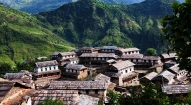
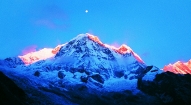
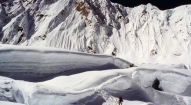
- All airport/hotel transfers.
- All accommodation in Kathmandu and during the trek.
- Welcome and farewell dinner.
- All domestic flight (Kathmandu –Lukla - Kathmandu)
- Trek leader, assistant trek leader) Sherpa porters- including their salary, insurance, equipment, flight, food and lodging
- Down jacket, sleeping bags, Trekking kit bag/duffel bag, trekking map and trekking Poles
- All necessary paper work and permits (National park permit or entrance fees etc)
- A comprehensive medical kit
- All government and local taxes
- Nepal visa fee.
- Airport departure tax.
- International airfare to and from Kathmandu.
- Excess baggage charges.
- Lunch and evening meals in Kathmandu.
- Extra night accommodation.
- Travel and rescue insurance.
- Personal expenses (phone calls, laundry, bar bills, battery recharge, extra porters, bottle or boiled water, showers etc).
- Tips for guides and porters.





